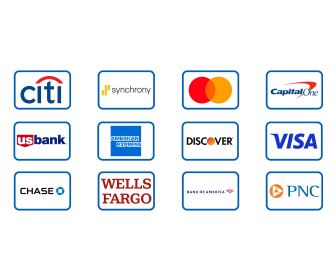The Rise of Digital Credit Cards: What It Means for You
Physical credit cards are quickly becoming relics of the past. In 2025, digital credit cards — stored in your smartphone, smartwatch, or browser — are changing how we pay, protect, and manage our money. From faster checkouts to enhanced fraud protection, the shift to digital isn’t just convenient — it’s transformative. But what does it actually mean for consumers, and what should you watch out for as the plastic fades away?
1. What Exactly Is a Digital Credit Card?
A digital credit card is a virtual version of your physical card, issued by banks or fintech platforms for use in mobile wallets (like Apple Pay, Google Wallet, or Samsung Pay) or through web-based payment systems. Some cards exist only in digital form — no plastic counterpart — making them ideal for instant access and secure online transactions.
Unlike traditional cards, digital credit cards use tokenization — replacing your real card number with a one-time encrypted code for every transaction. That means even if hackers intercept your data, it’s practically useless to them.
2. Why Digital Cards Are Exploding in 2025
After years of steady growth, digital credit cards have become mainstream. According to a 2025 Federal Reserve Payments Report, over 70% of U.S. adults now use mobile wallets monthly. This surge is driven by:
- Speed: Tap-to-pay and online autofill make checkout nearly instant.
- Security: Encrypted tokens and biometric verification reduce fraud risk.
- Convenience: One wallet holds multiple cards — no need to carry plastic.
- Integration: AI tools inside apps now track spending and optimize rewards automatically.
Even major issuers like American Express, Capital One, and Citi now offer instant virtual card numbers the moment you’re approved — no waiting for the mail.
3. Are Digital Credit Cards Safer?
Yes — but with nuance. Digital cards reduce exposure to skimming, cloning, and data breaches because they use unique payment tokens. Biometric authentication (like Face ID or fingerprint scanning) adds another layer of protection. However, your device now becomes the key to your finances — so keeping your phone secure is more important than ever.
Expert insight: Enable two-factor authentication and remote wipe on all your devices. Treat your digital wallet like a bank vault, not an app.
4. The Benefits You Might Be Overlooking
- Instant card replacement: Lose your phone or get hacked? You can freeze or replace your digital card instantly through your app — no waiting for new plastic.
- Virtual numbers for online shopping: Banks like Capital One and Citi now offer disposable “virtual cards” that expire after one use — perfect for reducing fraud.
- Smarter budgeting: Digital cards integrate with analytics tools, helping track subscriptions, spending patterns, and rewards automatically.
- Eco-friendly advantage: Millions fewer physical cards produced means lower environmental impact.
5. The Drawbacks to Consider
Despite the perks, there are trade-offs. You rely on battery life, app uptime, and internet access — meaning if your phone dies, so does your wallet. Not every retailer accepts digital payments yet, especially small businesses or rural merchants. And since transactions are frictionless, it’s easier to overspend when “tap” replaces “count.”
Tip: Set spending alerts and weekly summaries to stay accountable. Convenience should simplify — not increase — your debt.
6. What This Means for the Future
The digital card revolution is here to stay. Expect tighter integration between banks, fintech apps, and payment networks — plus new features like AI-driven fraud detection and dynamic credit limits that adjust in real time. As physical cards phase out, your credit experience will become more personalized, data-driven, and secure.
Final Thoughts
Digital credit cards represent the next evolution of personal finance — faster, smarter, and more secure. But like any tool, their power depends on how you use them. Embrace the convenience, protect your devices, and stay mindful of your spending. The plastic era may be ending, but financial discipline will never go out of style.
Not financial advice. Card features, security options, and wallet technology vary by issuer and region. Always verify current terms before linking or activating digital payment methods.
Continue reading: Hidden Perks of Premium Credit Cards You Didn’t Know About · Credit Cards and Taxes: What You Need to Know



